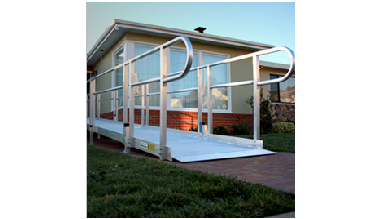
Each year in the U.S., roughly 5 million Americans are treated for a type of skin cancer. There are more new cases of skin cancer than breast cancer, colon cancer, prostate cancer, and lung cancer combined each year. Some of the different types of skin cancer include squamous cell carcinomas, basal cell carcinomas, and melanoma; with basal cell carcinoma being the most common but less dangerous than some of the other types. On the other hand, melanoma is less common than the other types of skin cancer but is much more dangerous and carries a higher risk of death. It is estimated that one person dies from melanoma every hour and that there will be roughly 76,100 new cases of melanoma diagnosed in the U.S. this year with an estimated 9,710 deaths related to melanoma.
What causes melanoma? Most cases of melanoma can be attributed to increased exposure to ultraviolet light (UV light), which is responsible for causing sunburns. The main source of UV light comes from the sun, although tanning beds also contain UV light at high levels. Your risk for developing melanoma doubles if you have had 5 or more sunburns during your lifetime. White males 50 years and older are diagnosed with melanoma more often than other individuals and it was found that adults over the age of 40 have the highest exposure to UV light each year. Survival rates with melanoma are good if the cancer is detected early before it spreads to other parts of the body, therefore early detection and prevention are critical to protecting yourself from this and other types of skin cancer.
What can you do to help detect skin cancers? One of the most important steps that you can take to protect yourself from melanoma is to know your body. Changes to the skin or moles may be an early indicator of skin cancer. Healthcare professionals refer to the ABCDEs of melanoma.
“A” stands for Asymmetrical, meaning if you draw a line through a mole the two halves are not equal.
“B” stands for Border, meaning if you look at the border of a mole it will be uneven or jagged and not be the same around the entire mole.
“C” stands for Color; moles can be different colors but moles that are multi-colored with different shades of brown or black can potentially be cancerous. Melanoma may also appear as a red or blue colored mole.
“D” stands for Diameter, or how wide the mole is. Moles that are larger than ¼ inch or greater than the size of a pencil eraser may potentially be cancerous.
“E” stands for Evolving, which means the mole is changing in any way from how it was in the beginning.
These changes can include a change in shape, size, color, or any other change such as bleeding or crusting of the mole.
It is important to keep a regular check on any moles that you have and to let your doctor examine your moles regularly. Always let your doctor know if you have a spot that you think may potentially be cancerous.
What can I do to help prevent skin cancers? In addition to knowing how to detect melanoma, it is also very important to know what steps you can take to help protect yourself. Because overexposure to UV light from the sun is a major risk factor in developing melanoma, sun protection is a key preventative step.
Avoid sun exposure during the hottest hours of the day (10 A.M. - 4 P.M.) and if you are out during those hours try staying in the shade as much as possible.
Wear sun-protective clothing if possible, including clothing that covers your arms and legs and clothing that is tightly woven. These types of clothing can help prevent the sunlight from reaching your skin. Some manufacturers make outdoor clothing that is designed specifically for UV protection.
Wear large-brimmed hats that can cover your ears and neck and wear sunglasses that provide UV protection.
Use a sunscreen with at least an SPF of 15 every day, and when spending an extended amount of time outdoors use a sunscreen with at least an SPF of 30. Apply the sunscreen at least 15-30 minutes before going outside and reapply every 2 hours for appropriate protection. When choosing a sunscreen, choose one that offers both UVA and UVB protection, these sunscreens are also known as broad-spectrum sunscreens.
Finally, avoid the use of tanning beds if possible. While not all tanning beds use UV light, many of them do and can lead to a high level of UV light exposure. At a minimum, make sure that if you are using one of these products that it is UV light-free.
By understanding how to detect potentially dangerous moles or spots on the skin and by taking steps to effectively protect yourself from UV light, you can greatly reduce your risk of developing melanoma or other skin cancers and can enjoy a happier and healthier summer! If you have questions please ask one of your local Food City pharmacists or visit www.skincancer.org for more information.
Reference:
The Skin Cancer Foundation. Melanoma. https://www.skincancer.org/skin-cancer-information/melanoma. Accessed January 14, 2015


Comments